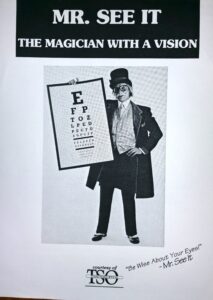When it comes to eating, “The first bite is with the eyes”. Feeling the texture stimulates the appetite. 75-95% of the flavour comes from smell and the flavour is enhanced by “sonic seasoning“. Eating is a truly multisensory experience (see our blog for Multisensory processing and Food for thought: taste, smell and flavour.) And it seems the senses also help us decide what food is familiar and, thus, whether to eat it or not.
In this post, I have invited Associate Professor Suzanna Forwood, Anglia Ruskin University to reflect on how the senses affect what food we decide to eat or not to eat. Suzanna Forwood conducts research on the factors that determine our food choices, including available tools for healthy choices.
When offered a menu, most people do not seek out the least familiar dish for their dinner. This is because most of us need food to be familiar for it to be appealing, and there are good reasons for this. From an evolutionary perspective, familiar food eaten in the past without any ill-effects is more likely to be safe this time, and safe food is essential for survival. From a psychological perspective, familiar food is food that we know about how filling or tasty it might be, and we need this information when choosing something to eat so we can match our current appetite.
When you reflect on it, eating is a profoundly unusual sensory experience. On the one hand, exploring food is necessary to gain the sensory information that makes it familiar: we don’t know whether we like it or want to eat it until it is familiar. On the other hand, eating food is bound up in a social contract: there is an expectation that we know what food we like and that we eat food we are served. This tension is particularly problematic for children who are still learning about the world and find it hard to express what they like. Their reluctance to like and eat less familiar foods can look like picky eating.
Sensory Education activities are designed for children and break this tension: food is not a meal but a game or classroom activity. The philosophy, originating in France and Scandinavia in the Sapere movement, is to offer children the chance to explore food in a structured and non-judgemental activity away from mealtimes. Children are provided with samples of foods, typically fruits or vegetables, to explore using all their senses. Golden rules for these activities are that no one must try or like any of the foods. Activities include variations of a single food or focus on specific senses. Food is discussed in terms of its sensory properties as experienced by the child with no expectation that the child has a preference. Sensory education therefore supports children by growing their familiarity with novel foods, as well as their vocabulary for talking about their sensory experience and communicating their preferences1,2.
The need for familiarity presents challenges when an adult loses part of their sensory world. Eating is fully multisensory activity: we eat with our eyes, our hands, our mouths, our noses and our ears, and our experience of food merges senses. For example, what we experience as flavour combines information from tastebuds in the mouth and smell receptors in the nose, and what we experience as texture combines information from touch receptors in the mouth and sound receptors in the ear. Simply removing one sensory domain can alter how food is experienced. You can explore this for yourself by tasting a food while holding your nose to block smell or wearing ear defenders to block sound. Doing either of these will change the holistic sensory experience of eating the food: the food will no longer be quite so familiar and there may be a change in how much you like or dislike it.
It’s complicated to adjust to a radical change in sensory or motor function for many reasons but retaining dietary variety and pleasure in eating remains important for health and wellbeing. At a very practical level, then, Sensory Education might offer a structured method for supporting a process of re-learning foods in the new sensory world – re-experiencing foods from an altered multisensory perspective and re-evaluating what is familiar and liked. Research has not yet explored whether Sensory Education can support adults experiencing sensory difficulty with their diets. We have tried co-developing Sensory Education activities with young adults, and the activities were enjoyed. The next step is to explore whether similar activities can be used with adults adjusting to sensory difficulty, such as visual impairment, or motor difficulty, such as recovery following stroke.
My father is that rare person who chooses unfamiliar foods – I think he enjoys the excitement when on holiday or somewhere new. And I remember thinking this was brave – like most children, I preferred familiar food and was amazed at someone who chose to eat something unknown. As it happened, when the food arrived, he would be presented with a regional dish or a local speciality, and when I tasted it, I learned that unfamiliar foods can be delicious and, in time, familiar favourites. It requires a kind of bravery to explore the unknown.
See our blog for Activities; especially 76-78.
Some suggestions for further listening, reading, and watching:
Eating for children with Sensory Difficulties
5 Sensory Tips for Picky Eaters
How to get your taste and smell back after Covid
_______________
1Mustonen, S., Rantanen, R, & Tuorila, H. (2009). Effect of sensory education on school
children’s food perception: A 2-year follow-up study. Food Quality and Preference, 20(3), 230-240. DOI: https://doi.org/10.1016/j.foodqual.2008.10.003
2Reverdy, C. (2011). Sensory Education: French Perspectives. In V. R. Preedy, R. R. Watson,
and C. R. (Eds.) Handbook of Behavior, Food and Nutrition (pp. 143-157) New York: Springer. DOI: https://doi.org/10.1007/978-0-387-92271-3_11

